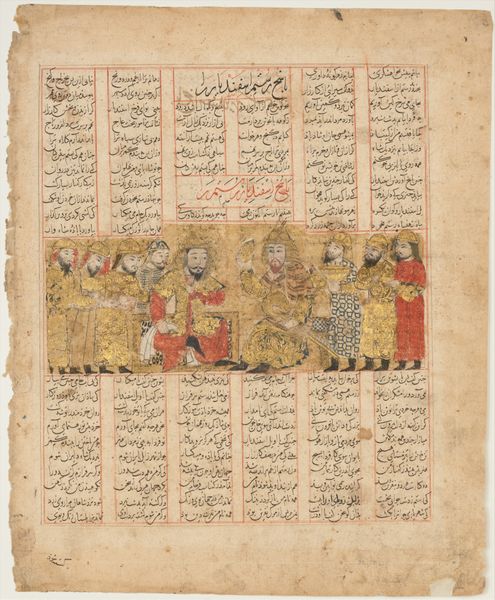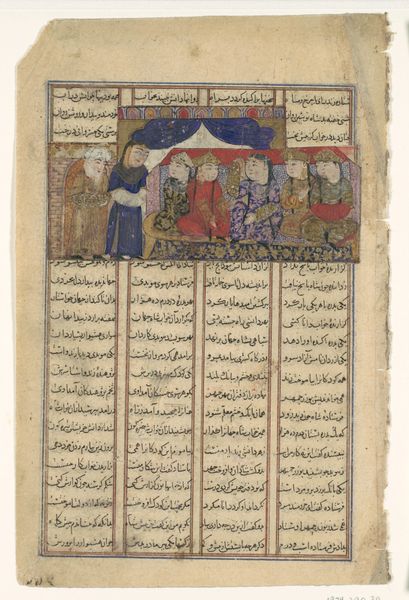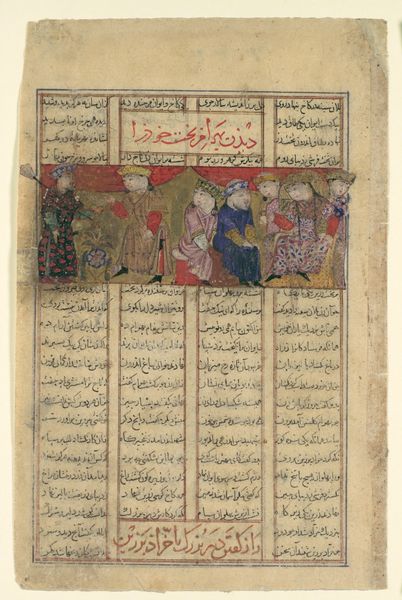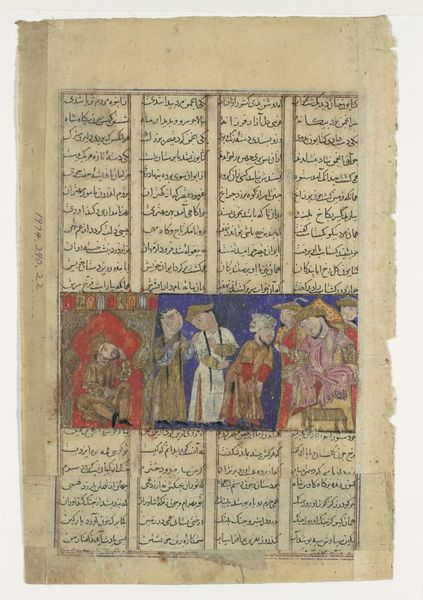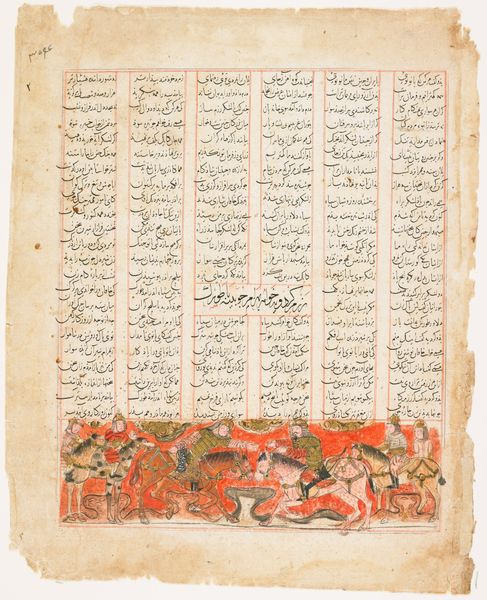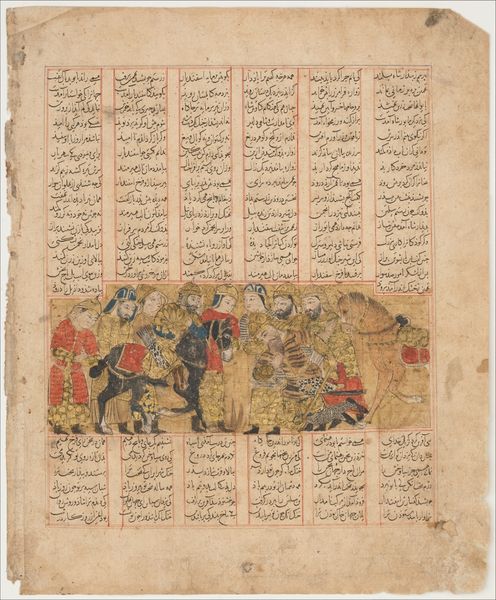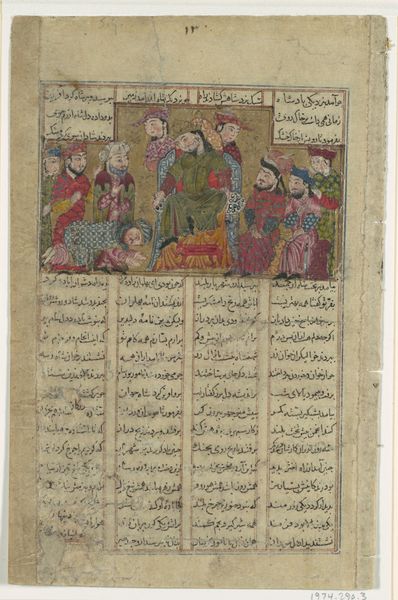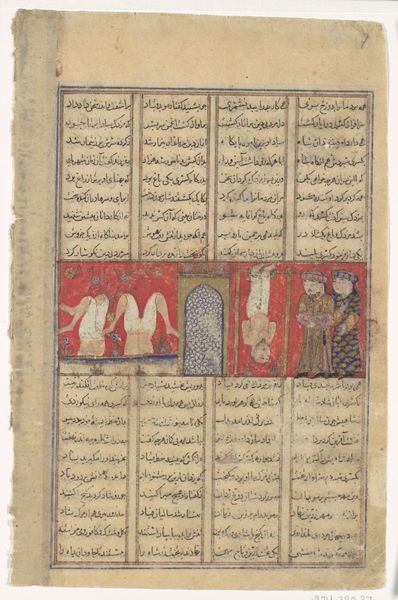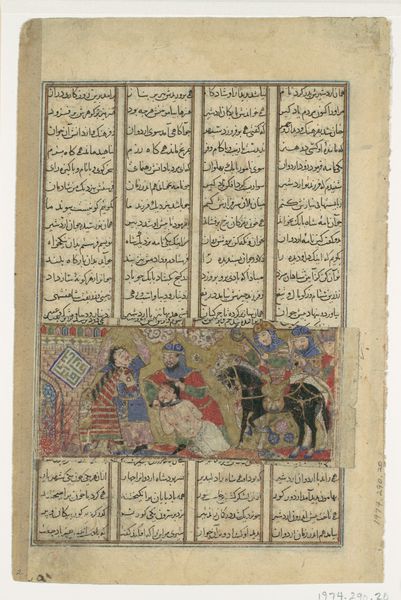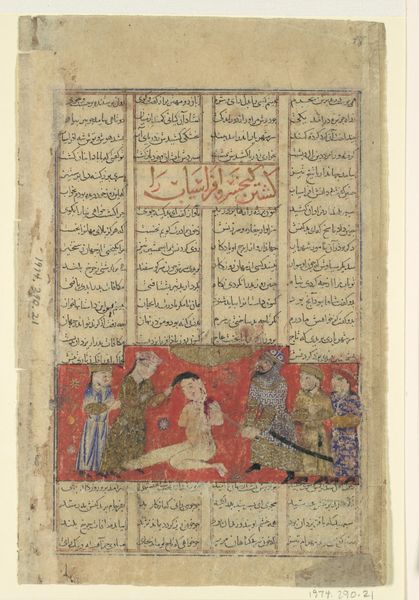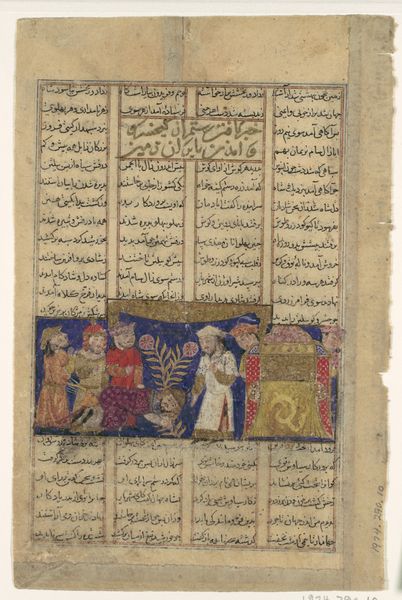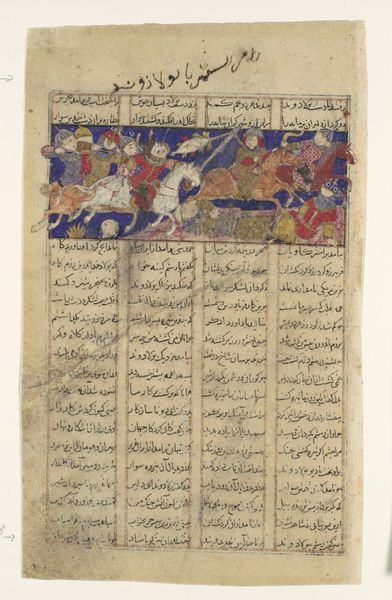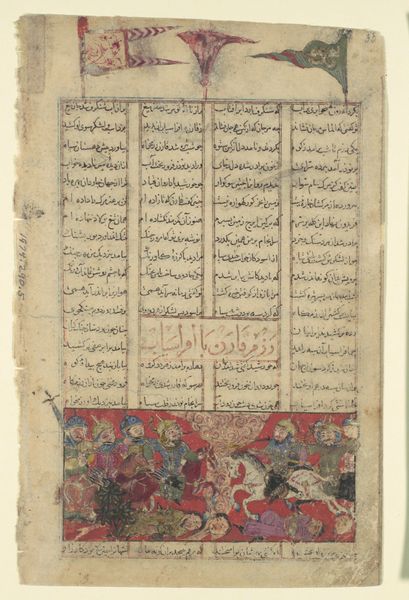
"Kharrad Recognizes the "Princess" as being an Automaton", Folio from a Shahnama (Book of Kings) 1316 - 1366
0:00
0:00
painting, paper, watercolor
#
water colours
#
painting
#
paper
#
watercolor
#
men
#
islamic-art
#
history-painting
#
miniature
Dimensions: Painting and Text Block: H. 11 3/8 in. (28.9 cm) W. 9 1/2 in. (24.1 cm) Page: H. 14 1/4 in. (36.2 cm) W. 11 1/2 in. (29.2) Mat : H. 22 in. (55.9 cm) W. 16 in. (40.6 cm)
Copyright: Public Domain
This folio, made with ink, opaque watercolor, and gold on paper, comes from a Shahnama, or Book of Kings. The text, written by Abu'l Qasim Firdausi, tells the story of Kharrad, who recognizes a princess as being an automaton. Consider the social context of manuscript production in Persia (modern-day Iran). Royal and aristocratic patronage supported the creation of lavishly illustrated books, which reinforced the patron’s status. The Shahnama itself is a crucial text in Persian culture, narrating a mythical history of Iran and promoting ideas of kingship and national identity. The image creates meaning through visual codes. Rich colors, detailed patterns, and hierarchical scale emphasize the importance of the figures and the opulence of the court. The inclusion of text panels surrounding the image shows the fusion of literature and art in Persian manuscript culture. Historians study the Shahnama by researching courtly patronage, Persian literary traditions, and the visual language of Persian painting. Through this, we understand the relationship between art, power, and cultural identity in the medieval Islamic world.
Comments
No comments
Be the first to comment and join the conversation on the ultimate creative platform.
